Amanda C. De C. Williams
Leveraging Activity Recognition to Enable Protective Behavior Detection in Continuous Data
Nov 16, 2020



Abstract:Protective behavior exhibited by people with chronic pain (CP) during physical activities is the key to understanding their physical and emotional states. Existing automatic protective behavior detection (PBD) methods depend on pre-segmentation of activity instances as they expect situations where activity types are predefined. However, during everyday management, people pass from one activity to another, and support should be delivered continuously and personalized to the activity type and presence of protective behavior. Hence, to facilitate ubiquitous CP management, it becomes critical to enable accurate PBD over continuous data. In this paper, we propose to integrate automatic human activity recognition (HAR) with PBD via a novel hierarchical HAR-PBD architecture comprising GC-LSTM networks, and alleviate the class imbalances therein using a CFCC loss function. Through in-depth evaluation of the approach using a CP patients' dataset, we show that the leveraging of HAR, GC-LSTM networks and the CFCC loss function leads to clear increase in PBD performance against the state-of-the-art (macro F1 score of 0.81 vs. 0.66 and PR-AUC of 0.60 vs. 0.44). We conclude by discussing possible use cases of the HAR-PBD architecture in the context of CP management and other situations. We also discuss the current limitations and ways forward.
Learning Bodily and Temporal Attention in Protective Movement Behavior Detection
Apr 24, 2019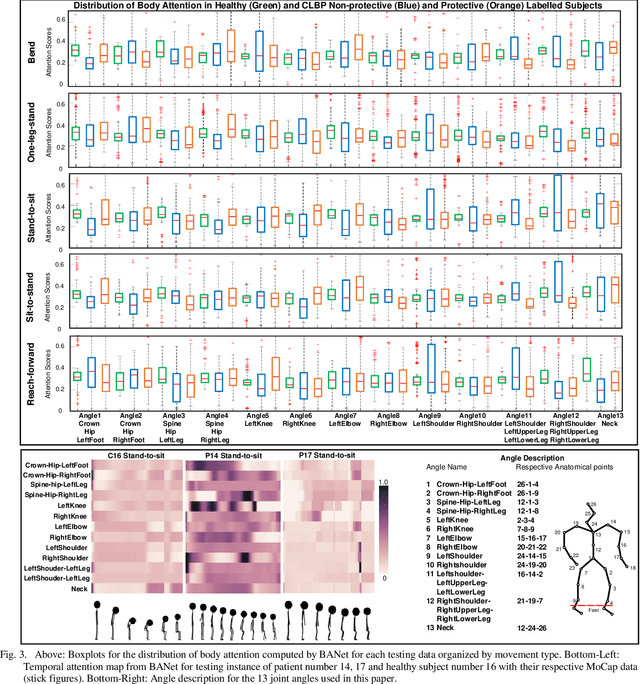
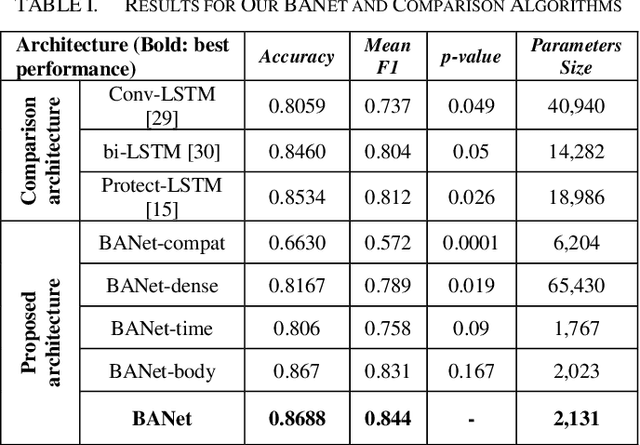
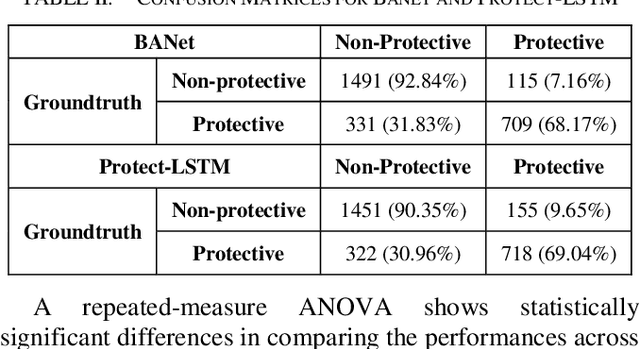
Abstract:For people with chronic pain (CP), the assessment of protective behavior during physical functioning is essential to understand their subjective pain-related experiences (e.g., fear and anxiety toward pain and injury) and how they deal with such experiences (avoidance or reliance on specific body joints), with the ultimate goal of guiding intervention. Advances in deep learning (DL) can enable the development of such intervention. Using the EmoPain MoCap dataset, we investigate how attention-based DL architectures can be used to improve the detection of protective behavior by capturing the most informative biomechanical cues characterizing specific movements and the strategies used to execute them to cope with pain-related experience. We propose an end-to-end neural network architecture based on attention mechanism, named BodyAttentionNet (BANet). BANet is designed to learn temporal and body-joint regions that are informative to the detection of protective behavior. The approach can consider the variety of ways people execute one movement (including healthy people) and it is independent of the type of movement analyzed. We also explore variants of this architecture to understand the contribution of both temporal and bodily attention mechanisms. Through extensive experiments with other state-of-the-art machine learning techniques used with motion capture data, we show a statistically significant improvement achieved by combining the two attention mechanisms. In addition, the BANet architecture requires a much lower number of parameters than the state-of-the-art ones for comparable if not higher performances.
Automatic Detection of Protective Behavior in Chronic Pain Physical Rehabilitation: A Recurrent Neural Network Approach
Feb 24, 2019
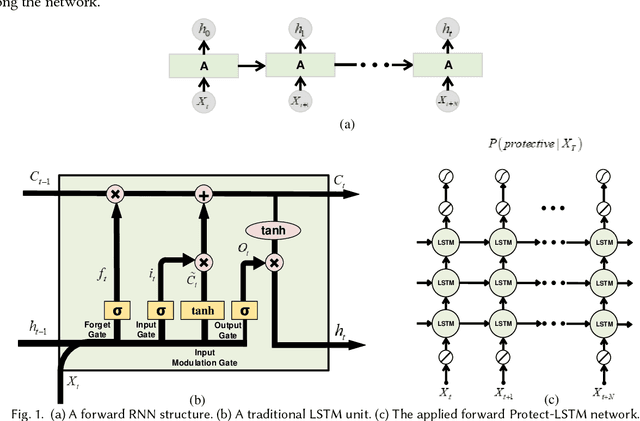

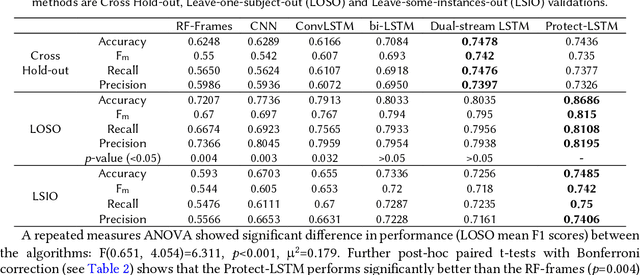
Abstract:In chronic pain physical rehabilitation, physiotherapists adapt movement to current performance of patients especially based on the expression of protective behavior, gradually exposing them to feared but harmless and essential everyday movements. As physical rehabilitation moves outside the clinic, physical rehabilitation technology needs to automatically detect such behaviors so as to provide similar personalized support. In this paper, we investigate the use of a Long Short-Term Memory (LSTM) network, which we call Protect-LSTM, to detect events of protective behavior, based on motion capture and electromyography data of healthy people and people with chronic low back pain engaged in five everyday movements. Differently from previous work on the same dataset, we aim to continuously detect protective behavior within a movement rather than overall estimate the presence of such behavior. The Protect-LSTM reaches best average F1 score of 0.815 with leave-one-subject-out (LOSO) validation, using low level features, better than other algorithms. Performances increase for some movements when modelled separately (mean F1 scores: bending=0.77, standing on one leg=0.81, sit-to-stand=0.72, stand-to-sit=0.83, reaching forward=0.67). These results reach excellent level of agreement with the average ratings of physiotherapists. As such, the results show clear potential for in-home technology supported affect-based personalized physical rehabilitation.
 Add to Chrome
Add to Chrome Add to Firefox
Add to Firefox Add to Edge
Add to Edge